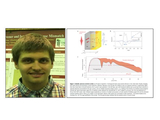"Efficient metallic spintronic emitters of ultrabroadband terahertz radiation"
T. Seifert, S. Jaiswal, U. Martens, J. Hannegan, L. Braun, P. Maldonado, F. Freimuth, A. Kronenberg, J. Henrizi, I. Radu, E. Beaurepaire, Y. Mokrousov, P. M. Oppeneer, M. Jourdan, G. Jakob, D. Turchinovich, L. M. Hayden, M. Wolf, M. Münzenberg, M. Kläui & T. Kampfrath
Nature Photonics (2016) doi:10.1038/nphoton.2016.91
Abstract: Terahertz electromagnetic radiation is extremely useful for numerous applications, including imaging and spectroscopy. It is thus highly desirable to have an efficient table-top emitter covering the 1–30 THz window that is driven by a low-cost, low-power femtosecond laser oscillator. So far, all solid-state emitters solely exploit physics related to the electron charge and deliver emission spectra with substantial gaps. Here, we take advantage of the electron spin to realize a conceptually new terahertz source that relies on three tailored fundamental spintronic and photonic phenomena in magnetic metal multilayers: ultrafast photoinduced spin currents, the inverse spin-Hall effect and a broadband Fabry–Pérot resonance. Guided by an analytical model, this spintronic route offers unique possibilities for systematic optimization. We find that a 5.8-nm-thick W/CoFeB/Pt trilayer generates ultrashort pulses fully covering the 1–30 THz range. Our novel source outperforms laser-oscillator-driven emitters such as ZnTe(110) crystals in terms of bandwidth, terahertz field amplitude, flexibility, scalability and cost.
The URL for the article is http://www.nature.com/nphoton/journal/vaop/ncurrent/full/nphoton.2016.91.html
T. Seifert, S. Jaiswal, U. Martens, J. Hannegan, L. Braun, P. Maldonado, F. Freimuth, A. Kronenberg, J. Henrizi, I. Radu, E. Beaurepaire, Y. Mokrousov, P. M. Oppeneer, M. Jourdan, G. Jakob, D. Turchinovich, L. M. Hayden, M. Wolf, M. Münzenberg, M. Kläui & T. Kampfrath
Nature Photonics (2016) doi:10.1038/nphoton.2016.91
Abstract: Terahertz electromagnetic radiation is extremely useful for numerous applications, including imaging and spectroscopy. It is thus highly desirable to have an efficient table-top emitter covering the 1–30 THz window that is driven by a low-cost, low-power femtosecond laser oscillator. So far, all solid-state emitters solely exploit physics related to the electron charge and deliver emission spectra with substantial gaps. Here, we take advantage of the electron spin to realize a conceptually new terahertz source that relies on three tailored fundamental spintronic and photonic phenomena in magnetic metal multilayers: ultrafast photoinduced spin currents, the inverse spin-Hall effect and a broadband Fabry–Pérot resonance. Guided by an analytical model, this spintronic route offers unique possibilities for systematic optimization. We find that a 5.8-nm-thick W/CoFeB/Pt trilayer generates ultrashort pulses fully covering the 1–30 THz range. Our novel source outperforms laser-oscillator-driven emitters such as ZnTe(110) crystals in terms of bandwidth, terahertz field amplitude, flexibility, scalability and cost.
The URL for the article is http://www.nature.com/nphoton/journal/vaop/ncurrent/full/nphoton.2016.91.html
Posted: May 26, 2016, 8:57 AM
